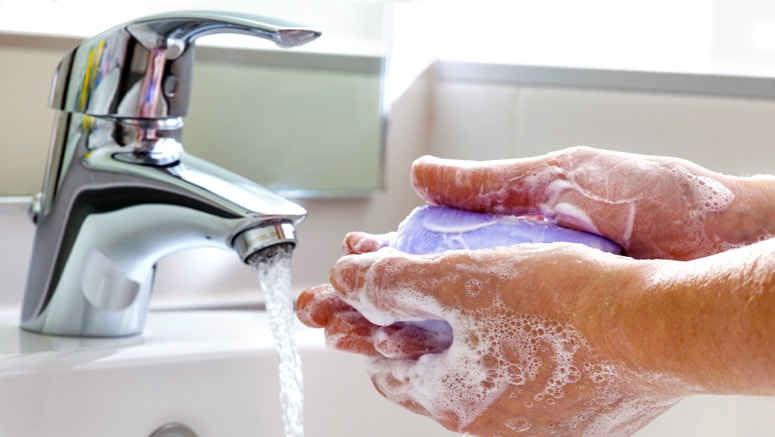
Nutrition is important for fitness
Eating a well-balanced diet can help you get the calories and
nutrients you need to fuel your daily activities, including regular
exercise. When it comes to eating foods
to fuel your exercise performance, it’s not as simple as choosing
vegetables over doughnuts. You need to get the right types of food at
the right times of the day. Learn about the importance of healthy
breakfasts, workout snacks, and meal plans.
Breakfast
Get off to a good start
Your first meal of the day is an important one. According to an article published in Harvard Health Letter,
eating breakfast regularly has been linked to a lower risk of obesity,
diabetes, and heart disease. Starting your day with a healthy meal can
help replenish your blood sugar, which your body needs to power your
muscles and brain.
Eating a healthy breakfast is especially important on days when
exercise is on your agenda. Skipping breakfast can leave you feeling
lightheaded or lethargic while you’re working out. Choosing the right
kind of breakfast is crucial. Too many people rely on simple
carbohydrates to start their day. But a plain white bagel or doughnut
won’t keep you feeling full for long. In comparison, a fiber- and
protein-rich breakfast may fend off hunger pangs for longer and provide
the energy you need to keep your exercise going. Follow these tips:
- Instead of eating sugar-laden cereals made from refined grains,
try oatmeal, oat bran, or other whole-grain cereals that are high in
fiber. Then, throw in some protein, such as milk, yogurt, or chopped
nuts.
- If you’re making pancakes or waffles, replace some of the
all-purpose flour with whole-grain options. Then, stir some cottage
cheese into the batter.
- If you prefer toast, choose whole-grain bread. Then pair it with an egg, peanut butter, or another protein source.
Carbohydrates
Count on the right carbohydrates
Thanks to low-carb fad diets, carbohydrates have gotten a bad rap.
But carbohydrates are your body’s main source of energy. According to
the Mayo Clinic, about 45 to 65 percent of your total daily calories should come from carbohydrates. This is especially true if you exercise.
Choosing the right kind of carbohydrates is important. Too many
people rely on the simple carbs found in sweets and processed foods.
Instead, you should focus on eating the complex carbs found in whole
grains, fruits, vegetables, and beans. Whole grains have more staying
power than refined grains because you digest them more slowly. They can
help you feel full for longer and fuel your body throughout the day.
They can also help stabilize your blood sugar levels. Finally, these
quality grains have the vitamins and minerals you need to keep your body
running at its best.
Protein
Pack protein into your snacks and meals
Protein is needed to help keep your body growing, maintained, and repaired. For example, the University of Rochester Medical Center
reports that red blood cells die after about 120 days. Protein is also
essential for building and repairing muscles, helping you enjoy the
benefits of your workout. It can be a source of energy when
carbohydrates are in short supply, but it’s not a major source of fuel
during exercise you’re well-fed.
Adults need to eat about 0.8 grams of protein per day for every kilogram of their body weight, reports Harvard Health Blog.
That’s equal to about 0.36 grams of protein for every pound of body
weight. Exercisers and older people may need even more. That protein can
come from:
- poultry, such as chicken and turkey
- red meat, such as beef and lamb
- fish, such as salmon and tuna
- dairy, such as milk and yogurt
- legumes, such as beans and lentils
- eggs
For the healthiest options, choose lean proteins that are low in
saturated and trans fats. Limit the amount of red meat and processed
meats that you eat.
Fruits and vegetables
Boost your fruit and vegetable intake
Fruits and vegetables are rich sources of natural fiber, vitamins,
minerals, and other compounds that your body needs to function
properly. They’re also low in calories and fat.
Aim to fill half your plate with fruits and veggies at every meal, recommends the United States Department of Agriculture.
Try to “eat the rainbow” by choosing fruits and veggies of different
colors. This will help you enjoy the full range of vitamins, minerals,
and antioxidants that the produce aisle has to offer. Every time you go
to the grocery store, considering choosing a new fruit or vegetable to
try. For snacks, keep dried fruits in your workout bag and raw veggies
in the fridge.
Healthy fats
Choose healthy fats
Unsaturated fats may help reduce inflammation, and they help
provide calories. While fat is a primary fuel for aerobic exercise, we
have plenty stored in the body to fuel even the longest workouts.
However, getting healthy unsaturated fats helps to provide essential
fatty acids and calories to keep you moving. Healthy options include:
- nuts
- seeds
- avocados
- olives
- oils, such as olive oil
Fuel up before exercise
When it comes to fueling up before or after a workout, it’s
important to achieve the right balance of carbs and protein. Pre-workout
snacks that combine carbohydrates with protein can make you feel more
energized than junk foods made from simple sugars and lots of fat.
Consider stocking your workout bag and refrigerator with some of these simple snacks:
Bananas
Bananas are full of potassium and magnesium, which are important
nutrients to get on a daily basis. Eating a banana can help replenish
these minerals while providing natural sugars to fuel your workout. For
added protein, enjoy your banana with a serving of peanut butter.
Berries, grapes, and oranges
These fruits are all full of vitamins and minerals, as well as
water. They’re easy on your intestines, give you a quick boost of
energy, and help you stay hydrated. Consider pairing them with a serving
of yogurt for protein.
Nuts
Nuts are a great source of heart-healthy fats and also provide
protein and essential nutrients. They can give you a source of sustained
energy for your workout. Pair them with fresh or dried fruit for a
healthy dose of carbohydrates. However, test these options to see how
they settle. High-fat foods can slow digestion, and they may make food
sit in your stomach too long if your workout is coming up quickly.
Nut butter
Many grocery stores carry single-serving packets of peanut butter
that don’t require refrigeration and can be easily stored in a gym bag.
For a tasty protein-carbohydrate combo, you can swipe peanut butter on:
- an apple
- a banana
- whole-grain crackers
- a slice of whole-grain bread
If you don’t like peanut butter, try almond butter, soy butter, or other protein-rich alternatives.
Calories
Don’t cut too many calories
If you’re trying to lose weight or tone your body, you may be
tempted to cut a ton of calories from your meals. Cutting calories is a
key part of weight loss, but it’s possible to go too far. Weight loss
diets should never leave you feeling exhausted or ill. Those are signs
that you’re not getting the calories you need for good health and
fitness.
According to the National Heart, Lung, and Blood Institute,
a diet containing 1,200 to 1,500 daily calories is suitable for most
women who are trying to lose weight safely. A diet with 1,500 to 1,800
daily calories is appropriate for most men who are trying to shed excess
pounds. If you’re very active or you don’t want to lose weight while
getting fit, you may need to eat more calories. Talk to your doctor or a
dietitian to learn how many calories you need to support your lifestyle
and fitness goals.
Takeaway
Balance is key
As you settle into an active lifestyle, you’ll probably discover
which foods give you the most energy and which have negative effects.
The key is learning to listen to your body and balancing what feels
right with what’s good for you. Follow these tips:
- Aim to make breakfast a part of your routine.
- Choose complex carbohydrates, lean protein sources, healthy fats, and a wide variety of fruits and veggies.
- Stock your fridge and gym bag with healthy workout snacks.
The right balance of carbohydrates, protein, and other nutrients can help fuel your exercise routine.
CULLED FROM HEALTH LINE
 Kids don't always listen when parents tell them to wash their hands
before eating, after using the bathroom, or when they come inside from
playing.
Kids don't always listen when parents tell them to wash their hands
before eating, after using the bathroom, or when they come inside from
playing.














